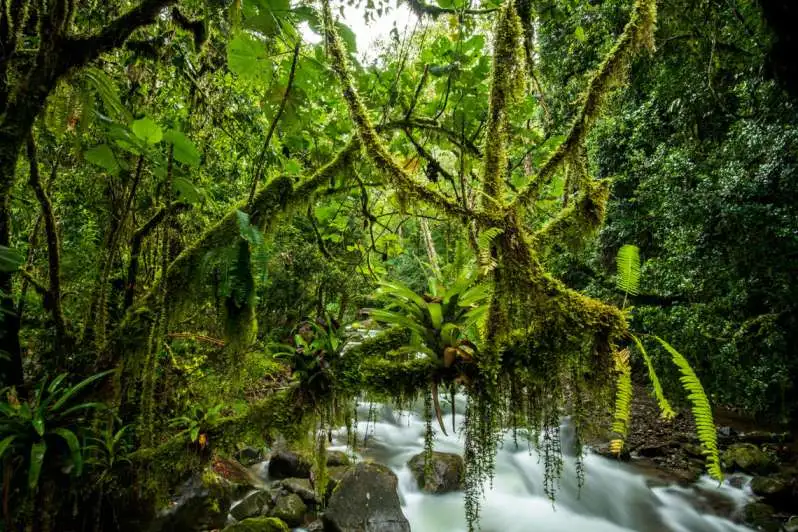Forests are vital for the management of climate on the globe. Described as the ‘lungs of the planet’ trees also play a function as carbon sinks, providers of oxygen and temperature stabilizers, making them vital partners in combatting climate change. But there is much more to the science of how trees impact the climate than simply sequestering carbon. Beginning with the water cycle to temperature regulation, forests are among of the most diversified systems that exist on the globe. In this blog, you will study the method by which forests contribute to regulate the temperature and the value of these natural assets for our world.
Carbon Sequestration: Nature’s Carbon Sink
Probably one of the most prominent responsibilities of the trees is their job of carbon storage. Trees extract CO2 from the atmosphere using photosynthesis and deposit the gas in their trunks, branches, leaves, and roots. This is referred to as carbon sequestration and plays a significant part in the decrease of greenhouse gasses in the atmosphere thereby preventing climate change.
The importance of trees in carbon storage
Forests, especially the tropical rain forests such as the Amazon, are vast carbon repositories that remove millions of tons of CO2 yearly. One huge tree can really absorb around 48 lbs of CO2 per year and with respect to the carbon, forests comprise roughly 45% of land.
Why it matters
Through sequestration of carbon dioxide, woods have a role in reducing the pace of increase in global temperatures. Lack of this natural carbon sink would lead to buildup of more CO2 in the atmosphere thus exacerbating the greenhouse effect and subsequently, climate change.
Regulating Water Cycles: The Rainmakers

Forests play a key role in controlling the planet’s water cycles by affecting rainfall patterns and water distribution. Trees emit water vapor through a process called transpiration, where water collected by roots is released into the atmosphere from leaves. This moisture leads to cloud formation and precipitation, providing a self-sustaining water cycle within forest ecosystems.
Transpiration and rainfall
Forests, particularly tropical rainforests, are responsible for creating their own rainfall. For example, the Amazon rainforest produces 20% of the world’s oxygen and recycles large amounts of its own moisture, adding considerably to rainfall in the region. Without woods, rainfall patterns can be interrupted, leading to droughts and changed ecosystems.
Water retention
In addition to delivering rainfall, woods operate as natural water reservoirs. Their deep root systems help keep moisture in the soil, avoiding erosion and aiding groundwater recharge. This water control assists local towns by maintaining a continuous supply of fresh water, especially during dry seasons.
Temperature Regulation: Cooling the Planet
Forests operate as natural air conditioners by helping control the Earth’s temperature. Through activities including shade, evaporative cooling, and albedo (the reflection of sunlight), woods help cool the atmosphere and maintain a balanced temperature.
Evaporative cooling
When trees emit water vapor through transpiration, it cools the surrounding air. This mechanism, together with the shade offered by forest canopies, helps lower local temperatures and minimize the “urban heat island” effect, which happens when cities become much warmer than surrounding areas owing to lack of vegetation.
Albedo effect
The albedo effect refers to the capacity of surfaces to reflect sunlight. Forests have a lower albedo than open ground, meaning they absorb more sunlight and store it as heat. However, this heat is compensated by the cooling effects of transpiration and shade, making forests an overall cooling influence in global temperature control.
Forests and Biodiversity: A Symbiotic Relationship
Forests are home to about 80% of terrestrial species, and this richness contributes to their capacity to control the climate. Healthy, diversified ecosystems are more resilient and better able to trap carbon, store water, and maintain equilibrium in the natural world.
Biodiversity promotes resilience
Diverse forests, with a range of tree species and animals, are more resistant to diseases, pests, and temperature extremes. This resilience helps them to continue delivering critical functions, including as carbon sequestration and temperature regulation, even in the face of environmental threats.
The function of animals in climate regulation
Wildlife in forest environments has duties of regulating the health of the ecosystems. For instance, birds and animals contribute in the dispersal of seeds, therefore the regeneration of the woods. Therefore, the forest helps these species and they in return, sustain the forest therefore a cycle of development of the forest and the species.
Read Also: Which Pollution Types Contain Smog and CFCs
Effects of Deforestation and Climate Change

Although forests offer various climatic positives, deforestation is a huge danger to the ability of the planet’s climate control. For instance, when the forests are chopped to make room for agriculture, logging or urbanization, then the carbon stored there is released into the atmosphere and leads to global warming.
The carbon release from deforestation
When trees are cut, the carbon they absorb is back to the environment as CO2 thereby worsening the greenhouse effect. Logging is the second greatest source of carbon dioxide emissions and is answerable for roughly 10% of world emissions.
Disrupting water cycles
Deforestation also impacts the hydrological cycle and resulting in less rainfall and higher possibilities of droughts. This implies that communities that used to obtain rainfall due of the trees may discover the availability of water has been reduced down considerably hurting agricultural and food production.
Conclusion
Forests are truly our green companions in climate change mitigation since they contribute in carbon storage, water supply, and temperature moderation. To that aim, knowing how trees contribute in controlling the climate, one will recognize the necessity to conserve them. Sustainable forest management and afforestation is not only about animal protection, it is also about climate conservation and future generations. It is consequently the obligation and responsibility of each responsible person to maintain such critical ecosystems before they are destroyed.







